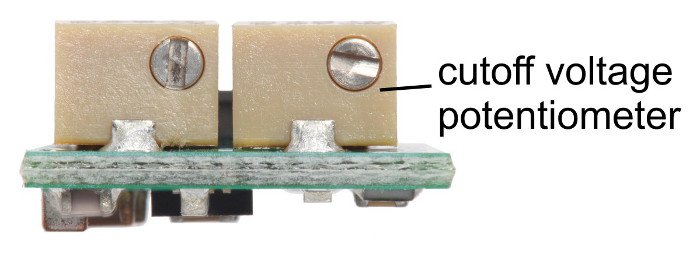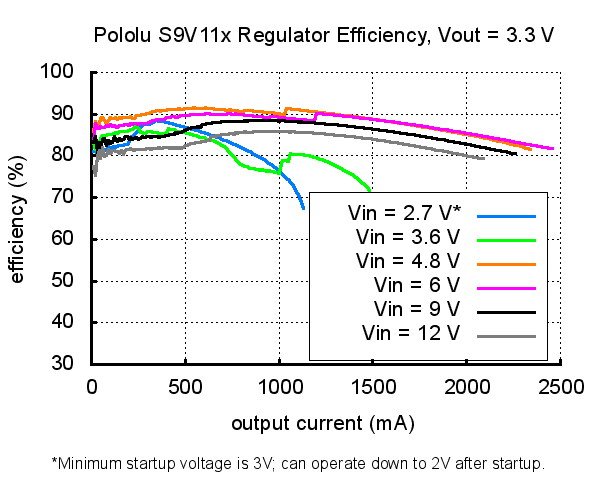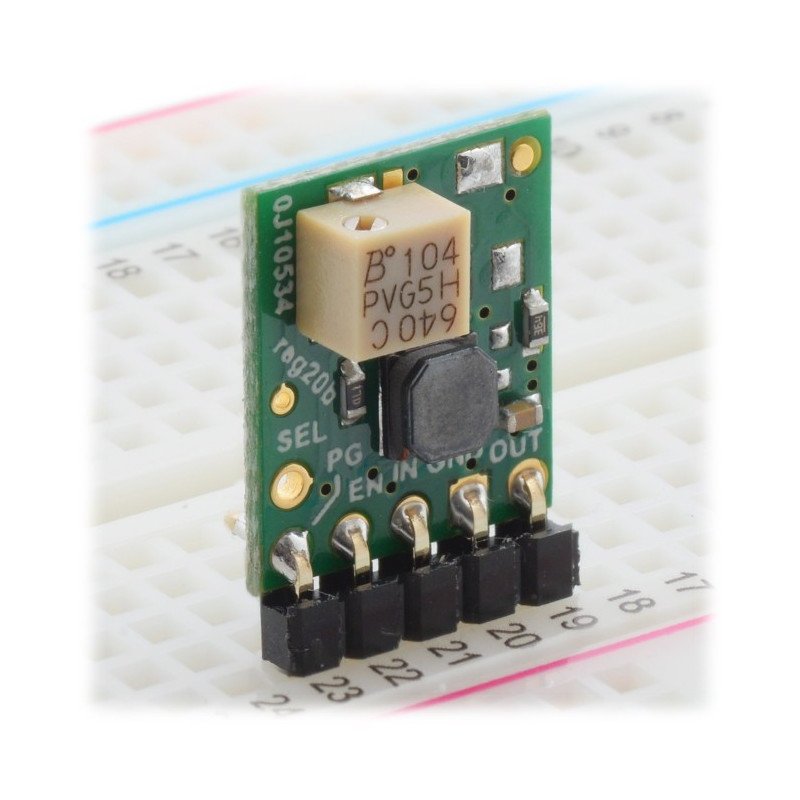Specification
- Input voltage: from 3 V to 16 V
- Maximum output current: 1.5 A
- Resting current: 1 mA
- Output voltage: 3.3 V (can be changed to 5 V using SEL pin)
- Short-circuit and overtemperature protection
- Under-voltage cut-off: selectable voltage
- Dimensions: 15 x 13 x 6 mm
- Weight: 0.8 g (without connectors)
Description S9V11F3S5CMA - step-up/step-down converter - 3,3V 1,5A - with low voltage cut-off - Pololu 2871
The converteris used to supply circuits operating at 3.3V. The circuit has a wide range of input voltages, which makes it ideal for battery-powered designs. Application of S9V11F3S5CMAensures stability of power supplyduring the entire cycle of battery discharge. In order to increase reliability, the module is equipped with short-circuit protection and automatic power cut-off when the permissible operating temperature or minimum voltage is exceeded.
|
In our offer is also set for buildingcharger for smartphone together with on-line manual. |
The set includes goldpins for individual soldering.
How to use
The module is very simple to use, it has three basic leads:
- VIN- input voltage from 3 V to 16 V. With lower voltage module will not turn on, higher can damage the chip.
- GND- Ground of the system.
- VOUT- output voltage of 3.3 V.
Additional pins:
- EN- Enable input. It switches on the circuit after applying voltage above 0,8 V. It is connected through voltage divider withVIN, so it cuts off the power at VIN below the set value.
- PG- voltage quality indicator. An open-drain type output, it sets low when the power drops below 90% of the nominal voltage, also when theENpin is in the low state. Returns to the high state when the mod 95 % is exceeded. Has high impedance, requires a pull-up resistor.
- SEL- output can be driven from 1.1 V to 16 V to change theVOUToutput to 5 V. SettingSELlow or unconnected setsVOUTto 3.3 V. To set to 5 volts permanently, solder a wire as shown below.
The allowable input voltage range is from 2 V to 16 V. The regulator will not turn on at a lower value. A higher voltage may damage the circuit.
The connectors are properly signed on the board.The pinout is 2.54 mm (goldpin connectors). The module can be clipped into thecontactboard, connected withwiresor soldered to a dedicated PCB.
Setting the cut-off voltage
Too low VIN voltage which should cause power cut-off is controlled by potentiometer and EN pin. When the voltage on EN drops below 0.7 V, the chip sets itself to a low power state - sleep mode. When 0.8 V is received at the EN pin, the chip returns to operation. Turning the potentiometer clockwise increases the cutoff voltage. This voltage can be set by measuring VIN and EN and adjusting the potentiometer according to a formula:
For example, if a 3.7 volt battery is connected to VIN and the cutoff voltage is to be 3.0 volts, the formula will be as follows:
EN is equal to 0.86 V, so spin the potentiometer until this is the voltage you can measure on the EN pin.
Note that the cut-off level includes hysteresis. The regulator will shut down at 0.7 V, but you must apply about 0.8 V to get it to start up again. The VIN voltage must be equal to approximately 114% of the cutoff voltage to restart (3.43 V in the above case).
Output current
The maximum current that can flow through the circuit depends on the value of the input voltage. This relationship is shown in the graph below:
Maximum output current as a function of input voltage.
Efficiency
This parameter is especially important with battery power supply, when it is important for the system to work as long as possible on a single charge. The efficiency of the converter depends on the current flowing and the input voltage (graph below). On average, it is between 85% and 95%, which makes it possible to use practically the maximum energy from the battery.
The efficiency of the converter depending on the current consumed.
Voltage jumps (pins)
In electronic circuits, the starting current may cause so-called spikes, sudden voltage jumps to a value above a set level. If the amplitude of the spikes exceeds the regulator's allowable value, the regulator can be destroyed. Therefore, if the circuit will be supplied with voltage above 9 V or the load will have high inductance, we recommend soldering a capacitor of 33 µF / 20 V or higher as close as possible to the circuit between VIN and GND.
Useful links |


















































































































































































































































































































































































